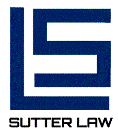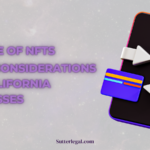Table of Contents
- 13H FILING REQUIREMENTS SIMPLIFIED
- Initial Filing
- Amended Filings
- Annual Filings
- Inactive Status
- Reactivated Status
- Termination Filings
13H FILING REQUIREMENTS SIMPLIFIED
As a San Francisco and Silicon Valley law firm, we assist lots of Startup founders on how the liquidate their stock after their companies file their Initial Public Offering (IPO).
Most startup founders are defined by the SEC as Large Traders due to large equity holdings in their own startups.
The SEC requires a Large Trader (read the blog “Large Trader Status and Obligations” to identify if this applies to you) to meet the following requirements:
Initial Filing
A Large Trader must have their attorney file its initial Form 13H with the SEC “promptly” upon satisfaction of the identifying activity level.
The SEC has indicated that under “normal” circumstances it would be appropriate for a Large Trader to make its Initial Filing within 10 days after the Large Trader effects aggregate transactions at least equal to the identifying activity level.
Identifying if you are a Large Trader can be complicated and may require advice from a securities Attorney before attempting to file a 13H form.
Amended Filings
If any of the information contained in a Form 13H filing becomes inaccurate for any reason, a Large Trader must have their attorney file an amended filing no later than the end of the calendar quarter in which the information is no longer accurate.
A Large Trader on “Inactive Status” (please see below) is not required to file any Amended Filings while it is on Inactive Status. Examples of reasons an Amended Filing is necessary to include changes in:
1) contact information
2) type of organization
3) trading strategy
4) regulatory status
5) a list of broker-dealers at which the Large Trader has an account, or 5) a description of affiliates.
Annual Filings
All Large Traders (other than those on Inactive Status) must have their lawyers submit an annual filing (“Annual Filing”) within 45 days after the end of each full calendar year.
This filing is completed on a 13H form (this is the same form used in the Initial Filing).
Inactive Status
Rule 13h-1(b) (3)(iii) permits a Large Trader who has not effected aggregate transactions at any time during the previous full calendar year in an amount equal to or greater than the identifying activity level to obtain inactive status by filing Form 13H and request “Inactive Status”.
Such Status becomes effective upon such a filing. While on Inactive Status the Large Trader is not required to make Amended Filings, also Large Trader may request that its SEC-registered broker-dealers stop maintaining records of its transactions by LTID.
Reactivated Status
A person or entity on Inactive Status who subsequently affects aggregate transactions that are equal to or greater than the identifying activity threshold must file a “Reactivated Status” Form 13H promptly after effecting such transactions.
Upon filing for Reactivated Status, the person once again would be subject to the filing requirements of Rule 13h-1 and must inform its broker-dealers of its Reactivated Status.
Termination Filings
Under Rule 13h-1(b)(3)(iii), a person, under certain narrow circumstances, may permanently end their Large Trader status by submitting a “Termination Filing.”
This filing is primarily designed to allow a Large Trader to inform the SEC that it has terminated operations, and therefore there is no chance of it requalifying for Large Trader status in the future.
Each of these filings can be complex and may require additional assistance from an experienced Securities Attorney to identify if a filing needs to be completed as well as what information is necessary to comply with the SEC’s requirements.
If the SEC has contacted you about your trading status, you should immediately speak with an experienced Business Securities Attorney to assist you with your SEC filings. We offer a free consultation with an experienced Securities attorney. To set up an appointment call or email.






